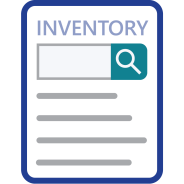Have you checked if your chemical is on our Inventory? If your chemical is on our Inventory and your introduction meets any terms of the Inventory listing, it is categorised as a ‘listed’ introduction. Learn more about listed introductions.
Who should read this?
Importers and manufacturers of industrial chemicals (and products that are designed to release industrial chemicals) who are working out if their introduction will be categorised as exempted, reported or assessed. You should read this information before the chemical is introduced in Australia together with our guide to categorising your chemical importation and manufacture.
What do we mean by 'intentionally released to the environment during use'?
Intentional release is any industrial use that results in the direct exposure of a chemical to the environment. It could be released directly to land, air, fresh water, marine water, biota or municipal water supplies. This covers a wide range of chemical uses and types.
Examples of intentional release include:
- soil amendments such as chemical fertilisers, nutrient additives and soil conditioners
- treatments added to town water supplies
- air treatments that are not for personal or domestic use
- chemicals added to municipal water supplies. We consider this to be an intentional release into the environment because the water may be used for activities that lead to direct release to the environment, such as irrigation.
- chemicals used to treat environmental oil spills
Note: Municipal water supplies are defined as large-scale potable water supplies distributed to homes and offices for human and animal use or irrigation.
Chemicals that are intentionally released to the environment during use are both a '
designated kind of release into the environment' and a '
specified class of introduction'.
Most industrial uses of a chemical do not involve intentional release of the chemical to the environment. For most industrial uses, a chemical will end up captured, treated or disposed of through a waste-management facility. These significantly reduce the proportion of a chemical that is released to the environment – which means that there is not an intentional and direct exposure of the chemical to the environment.
Examples of waste-treatment facilities include:
- sewage treatment plants
- landfill
- waste incinerators
- tailings dams
Examples of introductions that are not ‘intentionally released to the environment during use’:
- Introductions of chemicals used in cosmetics are not ‘intentionally released to the environment during use’. These chemicals are disposed to landfill or wastewater after end use. Wastewater is then treated at sewage treatment plants, which typically removes a large portion of the chemical before release of the treated water to the environment.
- Introductions of chemicals that are used in mining for processing ore are not ‘intentionally released to the environment during use’ if the residue is sufficiently contained in tailings dams after use. Tailings dams are intended as a permanent containment of the residue produced from mining. These dams have risk-management protocols and release controls as part of their normal operation to prevent release to the environment.
Is this introduction exempted, reported or assessed?
You must work out if your introduction meets the criteria for the exempted or reported categories by going through steps 1–6 of our guide to categorising your chemical importation and manufacture. If your introduction does not meet the criteria for the exempted or reported categories, it will be an assessed introduction (unless you meet the criteria for a commercial evaluation authorisation).
The additional or different requirements to be aware of when working out your category of introduction are at:
What is the environment exposure band? (Step 5.3)
The environment exposure band for the introduction of such a chemical is environment exposure band 4.
If your introduction is categorised as reported, you will need to do the following when you submit your pre-introduction report:
- identify that your introduction is a specified class of introduction
- select that 'it involves a designated kind of release into the environment'
- answer 'Yes' when asked, 'Does the chemical involve a designated release into the environment' and select the kind of designated release into the environment from the following options:
- intentional release during use to land, biota, natural waterways or municipal water supplies
- intentional release to air during use (other than solely domestic or personal use, or end use in an air freshener)
If your introduction is categorised as assessed, you will need to do the following when applying for an assessment certificate:
Additional record-keeping obligations
If you worked out your introduction category is exempted or reported by following steps 4–6 of our guide to categorising your chemical importation and manufacture, and
- your introduction is not internationally assessed for human health and the environment; or
- your introduction is internationally assessed for human health but not the environment
then you must keep the following records:
- a record of the kind of designated release into the environment from the following options:
- intentional release during use to land, biota, natural waterways or municipal water supplies
- intentional release to air during use (other than solely domestic or personal use, or end use in an air freshener)
- if practicable, information about the release into the environment, including:
- the location of the release into the environment (including all receiving water bodies); and
- the frequency of the release into the environment
- the quantity of the chemical released into the environment
For all other record-keeping requirements that apply to your chemical introduction, see our guidance on reporting and record-keeping obligations.
